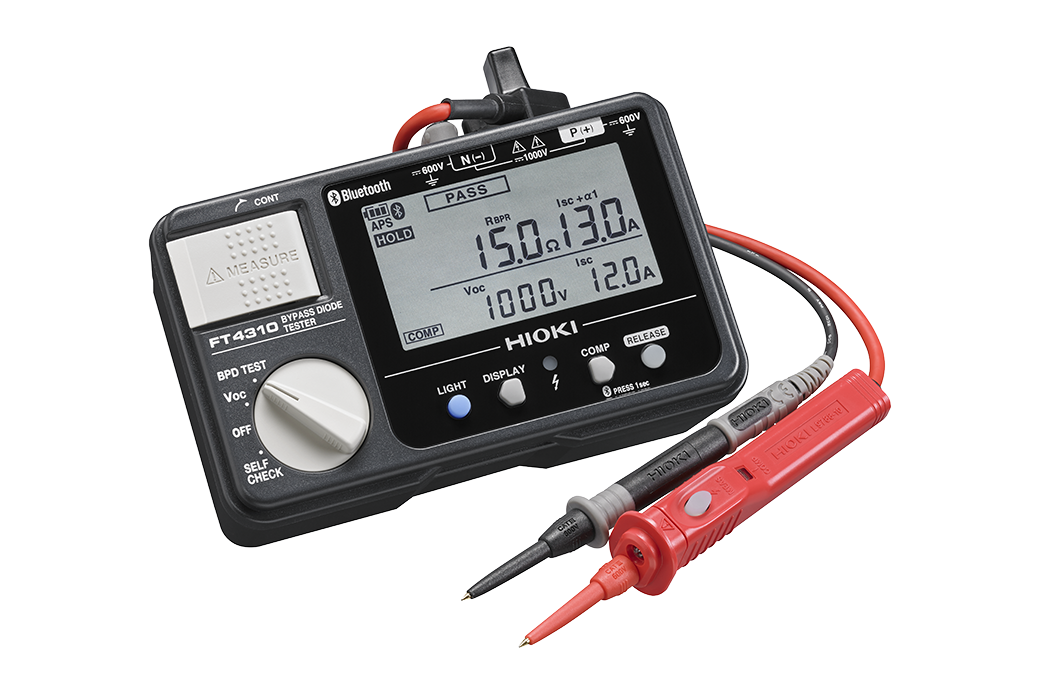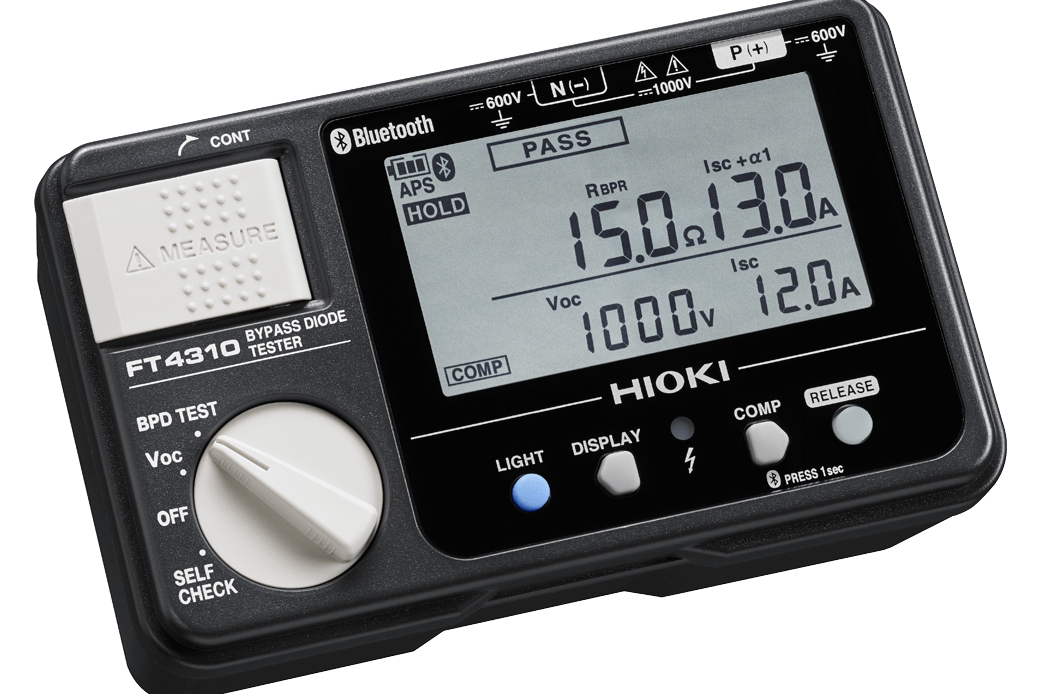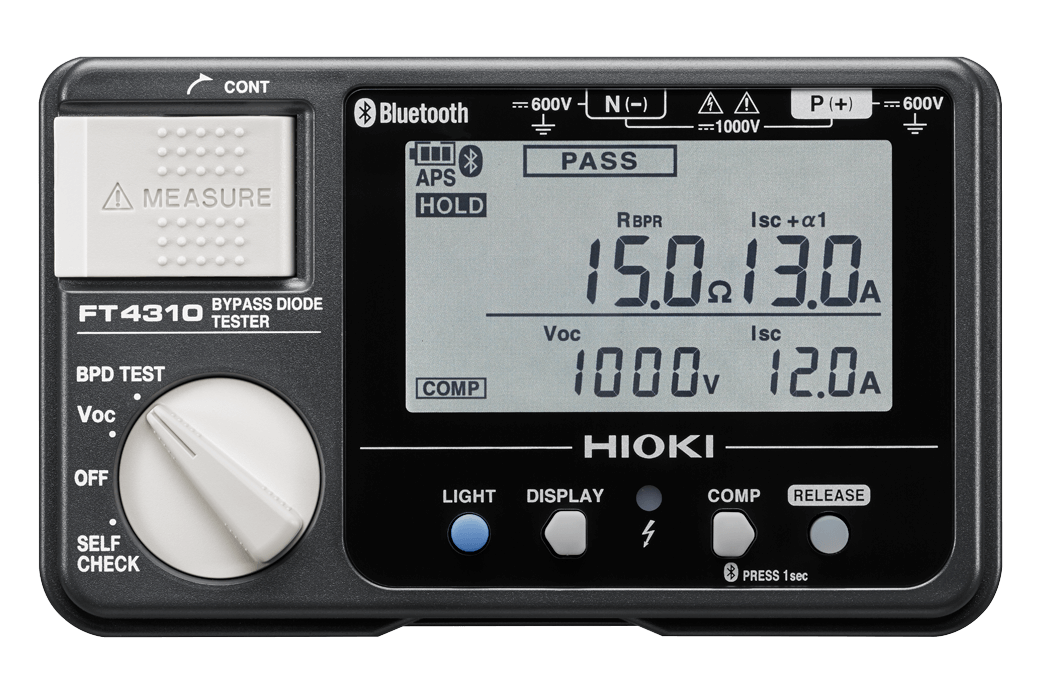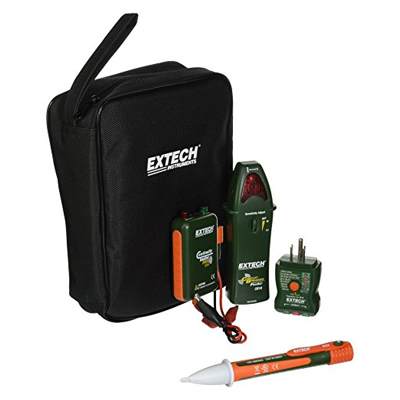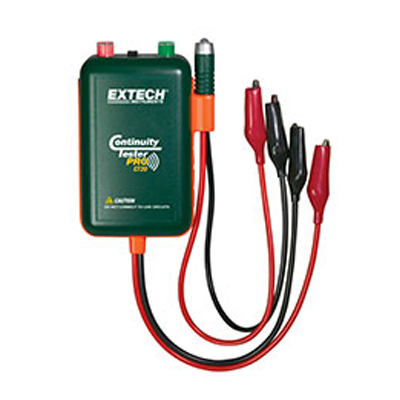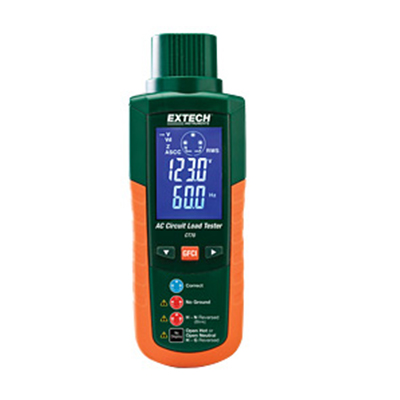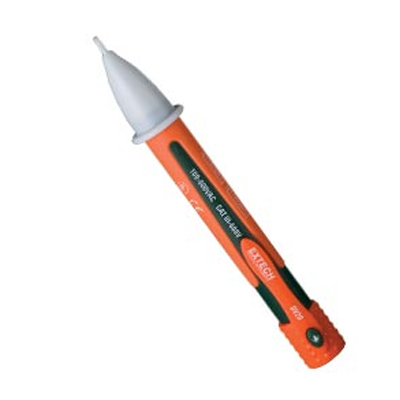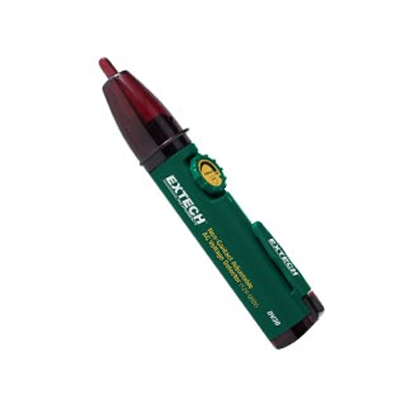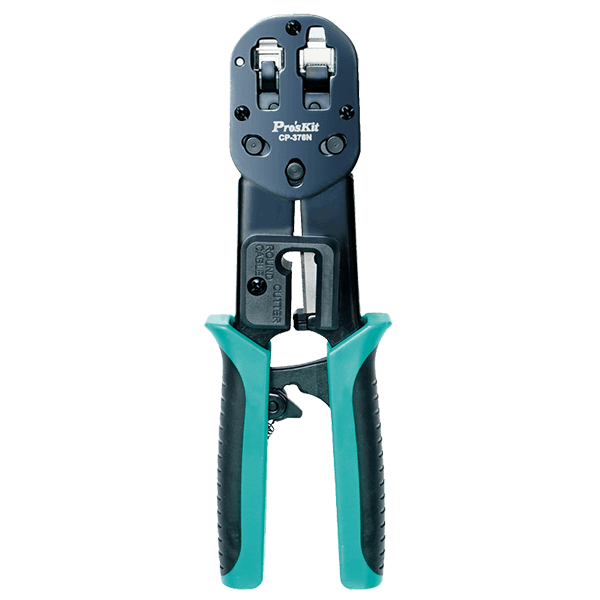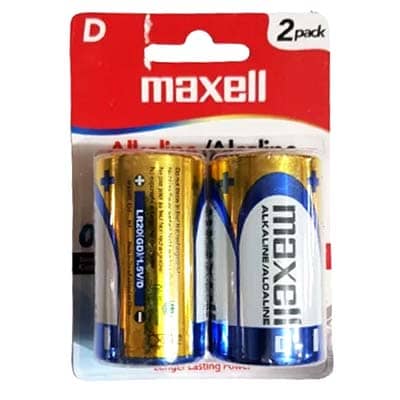Inspect solar panel bypass diodes for opens and shorts in broad daylight without covering panels
Traditionally, bypass diodes can only be inspected for good working condition at night or when power is not being generated by the solar panels in order to verify that any applied current is guided past the solar cells.
With the FT4310, you can detect open faults even when the sun is out without covering the panels.
Testing can also be performed at night.
*Testing for short-circuit faults can only be performed during the day.

Test for bypass diode open faults and other malfunctions using the strings in junction boxes
Easily test using the strings in the junction boxes, eliminating the need to climb onto the roof and dramatically improving work efficiency.
*Disconnect the string being measured from the interconnect prior to measurement.

Save time - simultaneously measure all electrical parameters
Simply set the rotary knob to “BPD TEST” and press the “Measure”button to measure and display all parameters necessary for fault identification (open-circuit voltage, short-circuit current, and bypass route resistance).
Measurement takes 2 sec. or less per string!
RBPR: Bypass route resistance value
Voc: Open-circuit voltage value
Isc + α1: Measuring current value
Isc: Short-circuit current value
Judgment: Presence of a bypass diode open fault (when set to comparator, judgment based using RBPR value as well)
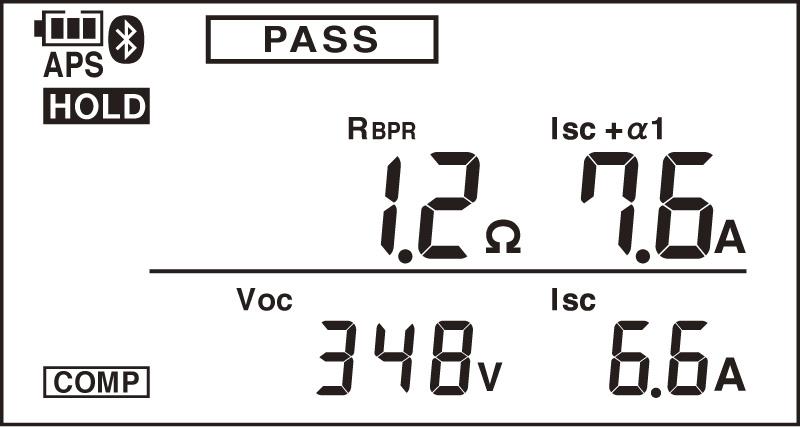
Instantly create reports by a free app (GENNECT Cross)
GENNECT Cross, a free app designed specifically for use with Hioki measuring instruments, lets you check and manage measurement results and create reports.
The software provides a range of functionality that helps manage data in the field, including photographing measurement sites, placing measurement results on photographs, and saving hand written memos.
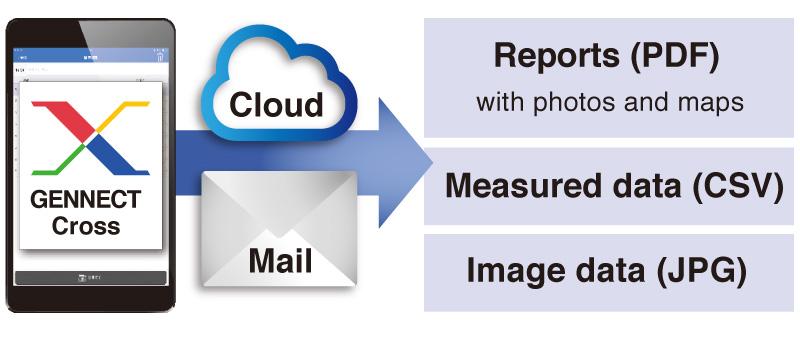
Be alerted to faults with an audible warning and by the instrument’s backlight
Red backlight and audible warning alert the user to possible faults.
Ex) Open fault (Using BPD TEST mode)
RBPR: The instrument indicates the open state (“opn”)
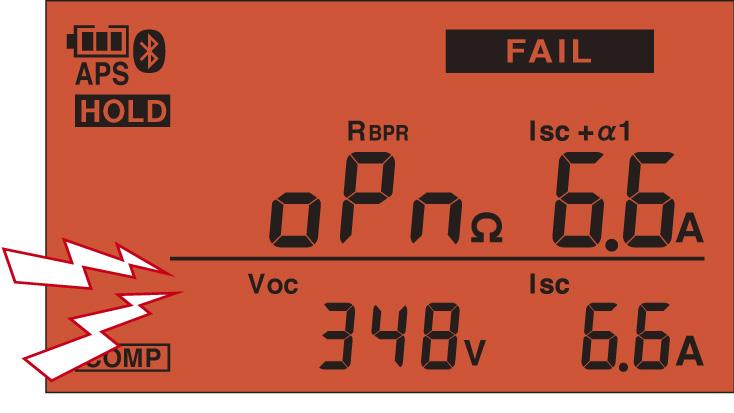
High-precision voltmeter ideal for detecting short-circuit faults
When a bypass diode experiences a short-circuit fault, the output voltage decreases (by about 10 V) because the corresponding solar panels are not contributing to the array’s generated power.
By detecting this difference, it is possible to detect bypass diode short-circuit faults and cell string losses.
The FT4310 incorporates a high-precision DC voltmeter so that it can detect a voltage difference of 10 V in a 1000 V system.
When used in Voc mode, which is specifically designed to measure open-circuit voltage, the instrument displays the voltage difference in less than 1 sec. and tests for a short-circuit fault.
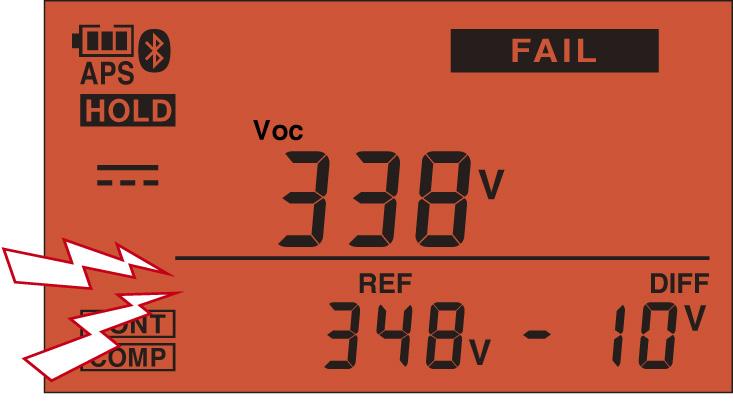
Convenient accessories
● Bundled case with neck strap
Leave both hands free so you can precisely position test probes without worrying about dropping the instrument.
● Integrated "hold" button right on test leads
A button right at your fingertip on the test leads lets you hold measured values easily, eliminating
the need to operate a control on the instrument itself.
They also incorporate a handy light.
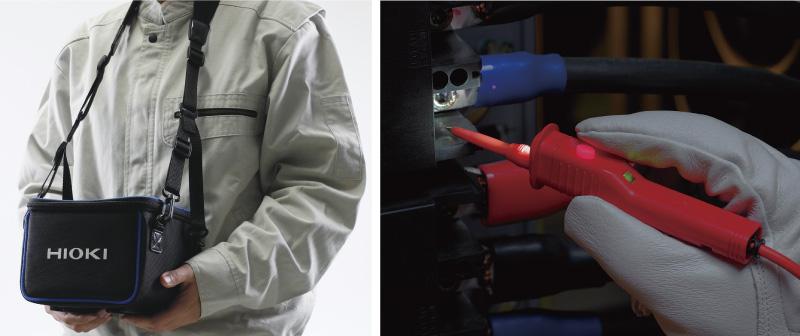
[Reference] Issues caused by faulty bypass diodes
Normal reading:
When a solar panel is obscured by a partial shadow (or when it fails), the current bypasses the panel in order prevent any drop-off in generating efficiency.
Short-circuit fault:
When a short-circuit fault occurs, the generated current flows in a loop, making it impossible to capture the generated power, resulting in lowered efficiency.
Open fault:
When an open fault occurs, current is forced to flow to the defective cell when it’s covered by a
shadow, causing the panel to heat up and posing the risk of fire.
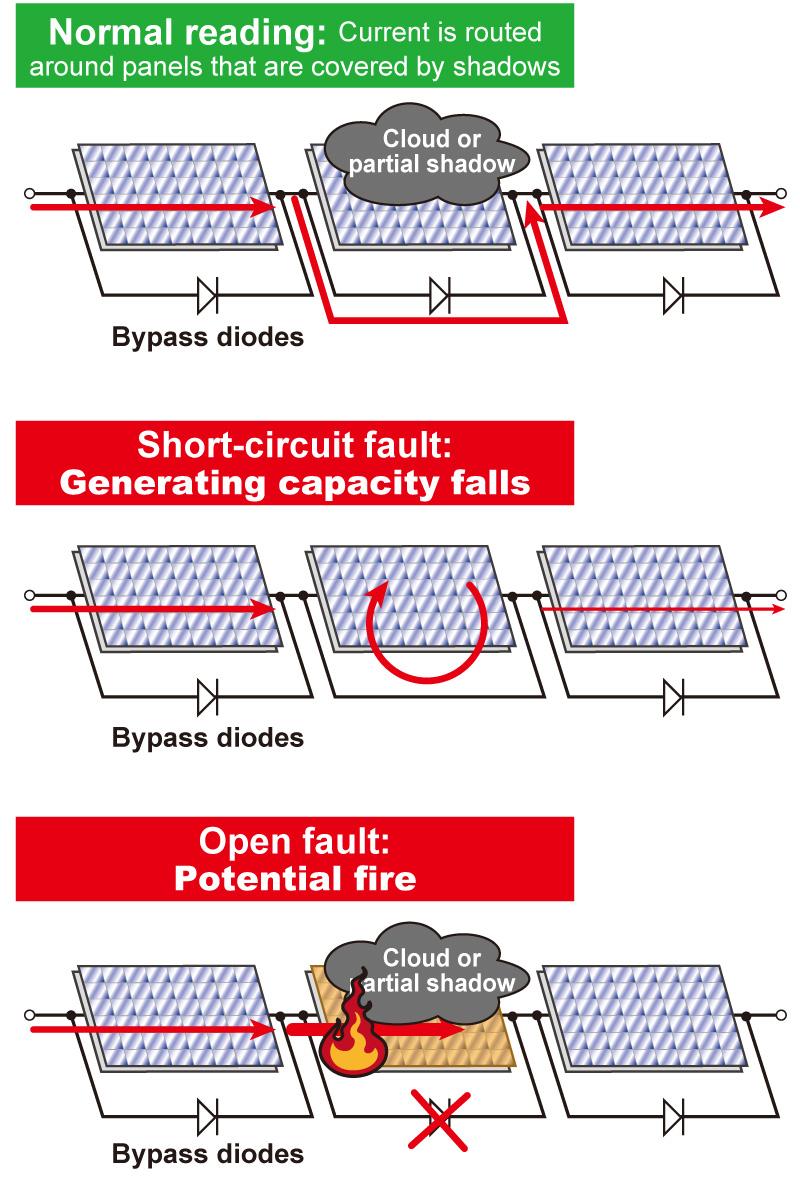
[Reference] The FT4310’s impact on strings
The impact of measurement on strings has been investigated thoroughly since even if bypass diode open faults can be detected while solar panels are exposed to sunlight, the endeavor would be pointless if the panels were damaged in the process.
When the FT4310’s measurement button is pressed, the instrument first measures ISC (the short-circuit current) and then applies a voltage such that a current that is 1 A greater than ISC flows.
Because bypass diodes are required by the JIS to function without issue even if a current equal to 1.25 times the module’s rated short-circuit current flows for a period of one hour, because the FT4310 performs constant-current control, and because the time of application is 5 ms or less, the FT4310’s impact on strings does not differ from that of I-V curve measurement or insulation resistance measurement.
The FT4310 can be used with confidence that it will not damage solar panels.
 Calibration
Calibration
 HVAC/Clean Rooms
HVAC/Clean Rooms
 Electrical
Electrical
Temperature
 Power & Energy
Power & Energy
 Mechanical & Maintenance
Mechanical & Maintenance
 Pharma, Health & Biomedical
Pharma, Health & Biomedical
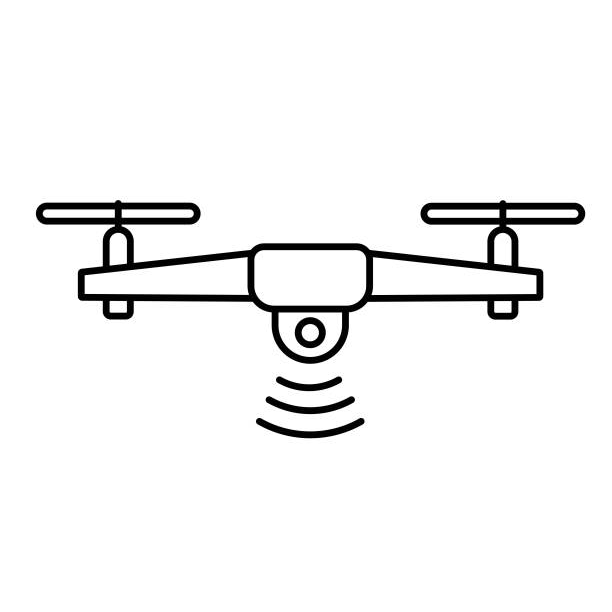 Drone Solution
Drone Solution
 Networking
Networking
 Transformer & Relay Testing
Transformer & Relay Testing
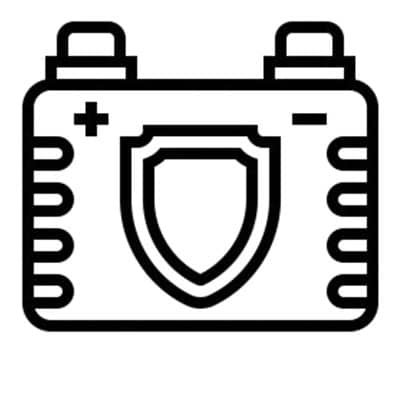 Insulation, Resistance and Battery
Insulation, Resistance and Battery
 Fault Testing & Diagnostics
Fault Testing & Diagnostics
 Lightning Protection Solution
Lightning Protection Solution
 Education, Research & Development
Education, Research & Development
 Civil Equipment
Civil Equipment
 Renewable Energy
Renewable Energy
 Cleaning and supplies
Cleaning and supplies
 Power Tools
Power Tools
 Safety Tools
Safety Tools
 Hardwares
Hardwares
 Construction Supply
Construction Supply
 Stationeries
Stationeries
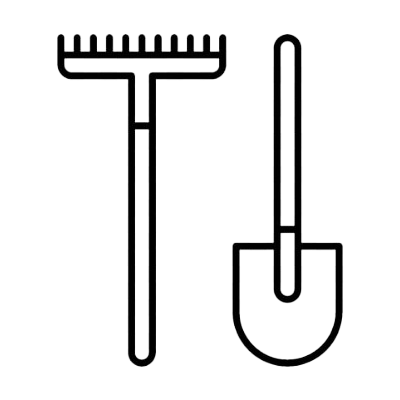 Garden Tools
Garden Tools
 Accessories
Accessories
 Machines
Machines
 Hand Tools
Hand Tools





































